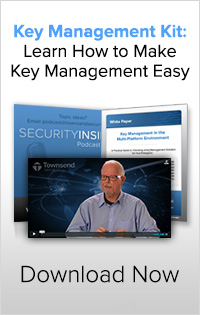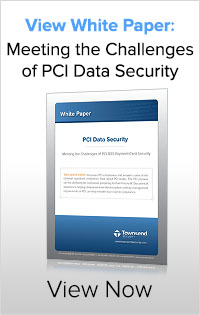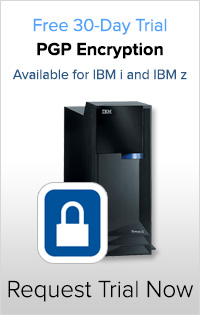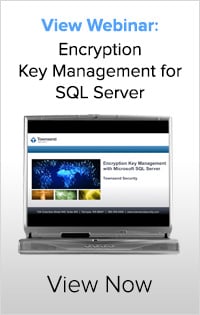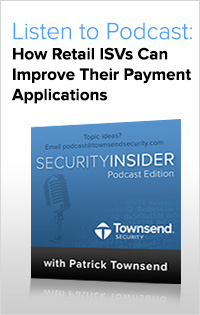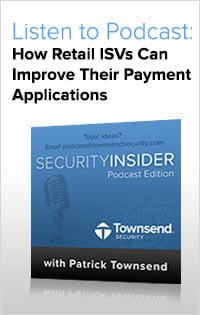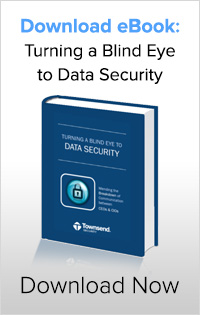If your company is an ISV, VAR, or OEM providing software or hardware to businesses who must meet data security compliance regulations (PCI, HIPAA/HITECH, GLBA/FFIEC, etc.), finding the right technology partners to offer your customers the best security available can be a difficult task.
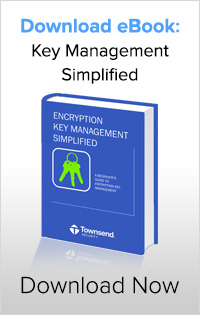
Technology partnerships have a reputation for being difficult and risky. Legal agreements, licensing models, and product performance are just a few examples of serious barriers. Unfortunately in today’s technology climate, there are many examples of technology partnerships that have reinforced this reputation.
When it comes to protecting sensitive information and meeting security compliance regulations, we don’t believe anything should get in the way of offering your customers the best data security tools available. Townsend Security helps businesses of all sizes protect sensitive data with powerful encryption and encryption key management that not only helps companies meet compliance requirements, but will protect them in the event of a data breach.
Here’s how Townsend Security makes partnering with a technology company easier than ever:
- Reduced Complexity to Lower Costs - Your technology partner’s product shouldn’t be so complicated that it takes outside consultants, drawn-out projects, and extra time and money to implement. In our eyes, a good partner works hard to make sure their product integrates seamlessly into your existing technology infrastructure. Townsend Security is able to accomplish this quickly and at a lower cost by having the capacity and functionality to specialize our solutions to meet our partners’ needs. We also ease the burden of implementation by providing our customers with a simple and cost-effective licensing model.
- Provide Powerful Products - With the staggering number of data breaches that happen every month, there is no excuse to using sub-standard encryption to protect sensitive data. Many companies try to cut corners or meet the minimum standard by using “home-grown” encryption and key management or cheap solutions that don’t adequately protect data. However, when businesses use these solutions, many end up having to re-do their encryption and key management projects in order to comply with data security regulations (which are always becoming more stringent), or even worse, they experience a data breach and realize they can no longer skate by with weak data security. Townsend Security offers powerful, NIST-certified encryption and FIPS 140-2 encryption key management for all legacy platforms and the cloud to help you exceed standards and prevent data loss.
 Excellent Back End Support - When it comes to back end support, the people you deal with on a day-to-day basis can make or break a partnership. Townsend Security works closely with our partners to ensure their success. We provide our partners with training, marketing materials, OEM options, as well as easy and cost effective licensing models to get our powerful solutions protecting your customers as soon as possible.
Excellent Back End Support - When it comes to back end support, the people you deal with on a day-to-day basis can make or break a partnership. Townsend Security works closely with our partners to ensure their success. We provide our partners with training, marketing materials, OEM options, as well as easy and cost effective licensing models to get our powerful solutions protecting your customers as soon as possible.
At the end of the day, the technology partner you choose should leverage your existing solutions by making them more powerful. It’s easy to secure data poorly, and it can be difficult to do it well, but Townsend Security has developed and scaled our encryption and encryption key management to eliminate the pains and obstacles of doing data security the right way.



 2. Use Password Best Practices - Password management is often the downfall of many companies who suffer a data breach, especially a data breach that happens internally or by mistake. Patrick Botz specialized in password management and has enabled IBM i users to manage their passwords more securely with his Single SignOn (SSO) service, SSO Stat! Using a program called Kerberos, SSO works with both Windows and IBM i domains to streamline password use in a secured environment.
2. Use Password Best Practices - Password management is often the downfall of many companies who suffer a data breach, especially a data breach that happens internally or by mistake. Patrick Botz specialized in password management and has enabled IBM i users to manage their passwords more securely with his Single SignOn (SSO) service, SSO Stat! Using a program called Kerberos, SSO works with both Windows and IBM i domains to streamline password use in a secured environment.

